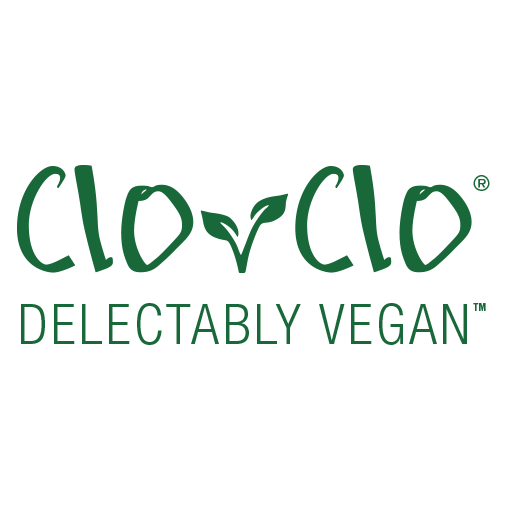
Ingredients B – G
Basil
Basil, also called great basil or Saint-Joseph’s-wort, is a culinary herb of the family Lamiaceae (Mint). The name “basil” comes from Latin, Basilius, and Greek βασιλικόν φυτόν, “royal/kingly plant”.
Black Olives
Black olives are olives that have been allowed to fully ripen on the tree before harvesting. There are many different varieties, based in part on geographic origin and tree species, but also influenced through storage and curing techniques. Nearly any ripe olive is considered “black,” even if its true color is more reddish or purple.
Olive trees grow abundantly throughout the Mediterranean and the Middle East and have been transplanted with some success into similar warm, dry climes around the world, particularly in California and the southwestern United States. California, alongside Greece, Spain, and the southern coasts of Italy and France, is some of the world’s largest producers of black olives.
Black Pepper
Black pepper is a flowering vine in the family Piperaceae, cultivated for its fruit, which is usually dried and used as a spice and seasoning, known as a peppercorn.
Broccoli
Broccoli is a green plant in the cabbage family whose large flowering head is eaten as a vegetable. The word broccoli comes from the Italian plural of broccolo, which means “the flowering crest of a cabbage” and is the diminutive form of brocco, meaning “small nail” or “sprout.”
Brown Rice Flour
This flour comes from unpolished brown rice. It has more nutritional value than white rice flour because it includes bran from the hull of the grain.
Brown Rice Syrup, Organic
The syrup we use is a certified gluten-free sweetener made from soft cooked rice. We use it to bind and sweeten our chewy bars just the right amount.
Carrageenan
Carrageenans are a family of linear sulfated polysaccharides that are extracted from red edible seaweeds. They are used for their gelling, thickening, and stabilizing properties.
Carrots
The carrot is a root vegetable, usually orange, though purple, black, red, white, and yellow cultivars exist. Carrots are a domesticated form of the wild carrot, Daucus carota, native to Europe and southwestern Asia. The plant probably originated in Persia and was originally cultivated for its leaves and seeds. The most commonly eaten part of the plant is the taproot, although the greens are sometimes eaten as well. The domestic carrot has been selectively bred for its greatly enlarged, more palatable, less woody-textured taproot.
Cauliflower Puree
Cauliflower has been blended and mashed, typically along with some seasonings and other ingredients. While cauliflower puree can be both a delicious and nutritious addition to anyone’s diet, diabetics and low-carbohydrate dieters often use mashed cauliflower as a substitute for our vegan cheese.
Coconut Oil
Coconut oil, or copra oil, is an edible oil extracted from the kernel or meat of mature coconuts harvested from the coconut palm.
Diced Tomatoes
“Diced” describes a particular degree to which a food product has been chopped. Diced food products have a coarse texture that impacts mouthfeel and provides bursts of flavor. Diced tomatoes are a central ingredient in many of our pizza recipe formulations.
Gluten-Free Flour
As the name suggests, this flour contains no gluten.
Granulated Garlic
Garlic is a species in the onion genus, Allium. Its close relatives include the onion, shallot, leek, chive, and Chinese onion. Garlic is native to Central Asia and northeastern Iran and has long been a common seasoning worldwide, with a history that includes several thousand years of human consumption and use.
Ingredients L – O
Lemon Juice
The lemon, Citrus limon Osbeck, is a species of a small evergreen tree in the flowering plant family Rutaceae, native to Asia. The tree’s ellipsoidal yellow fruit is used for culinary purposes throughout the world, primarily for its juice.
Oak Milk
Oak Milk is plant milk derived from whole oat (Avena spp.) grains by extracting the plant material with water. Unlike other plant milk having origins as early as the 13th century, oat milk was developed in the 1990s by the Swedish scientist, Rickard Öste. Over 2017-19, oat milk sales in the United States increased 10-fold. Oat milk may be consumed to replace dairy milk in vegan diets, or in cases of medical conditions where dairy is incompatible, such as lactose intolerance or an allergy to cow milk. Compared to dairy milk and other vegan milk products, oat milk has a relatively low environmental impact due to its comparatively low land and water needs for production.
Olive Oil
Olive oil is a liquid fat obtained from olives, a traditional tree crop of the Mediterranean Basin. The oil is produced by pressing whole olives. There is limited evidence of its possible health benefits. Olives, wheat, and grapes make up the three core food plants of Mediterranean cuisine.
Onion
It is a vegetable and the most widely cultivated species of the genus Allium. Its close relatives include garlic, shallot, leek, chive, and Chinese onion.
Pea Protein
Pea protein powder is becoming a fast favorite for gym-goers and health-conscious people alike because it benefits the heart and promotes muscle growth.
Salt
We use good ol’ table salt just like you do at home. It is not iodized and therefore contains no corn or corn byproducts.
Ingredients T – Y
Tapioca Syrup
Tapioca syrup is made from the cassava tuber, or yucca root, a plant that is indigenous to the tropics of South America. The syrup is made when natural enzymes are introduced into the cassava tuber. This process is known as enzymatic hydrolysis, which, when complete, forms a sweet syrup.
Thyme
Thyme is an aromatic perennial evergreen herb with culinary, medicinal, and ornamental uses. The most common variety is the Thymus vulgaris. Thyme is of the genus Thymus of the mint family, and a relative of the oregano genus Origanum.
Tomato Paste
Tomato paste is a thick paste made by cooking tomatoes for several hours to reduce the water content, then straining out the seeds and skins and cooking the liquid again to reduce it to a thick, rich concentrate.
Truffle Oil
Truffle oil is a modern culinary ingredient used to impart the flavor and aroma of truffles to CLO-CLO® Vegan Foods Pizzas. The ingredient is commonly used as a finishing oil in a variety of pizzas along with other dishes.
Turmeric
Turmeric is derived from dried rhizomes of the Curcuma Longa plant of the ginger family. Turmeric adds spices, flavor, and color. The amazing health benefits of turmeric include its ability to heal wounds, improve skin health, protect cognitive abilities, ease menstrual difficulties, reduce inflammation, eliminate depression, alleviate pain, slow the aging process and protect the digestive tract.
Vegetable Oil
Vegetable oil is a triglyceride extracted from a plant. The term “vegetable oil” can be narrowly defined as referring only to plant oils that are liquid at room temperature.
Xanthan Gum
Xanthan gum helps prevent our goodies from crumbling. (In mainstream foods, that’s a job normally left to gluten.) Xanthan comes from the dried cell coat of a microorganism called Zanthomonas Campestris. Although it sounds chemical, it is actually an all-natural ingredient. Xanthan gum is derived from the fermentation of corn sugars; however, all corn sugars are removed in the processing of xanthan gum. Xanthan gum contains no corn protein, and most corn-free people can tolerate it. However, we certainly recognize the seriousness of food allergies and encourage you to make your own decision (or consult your doctor) regarding whether or not you feel comfortable eating this ingredient.
Yeast Extract
Yeast extract is used as a flavoring agent.


